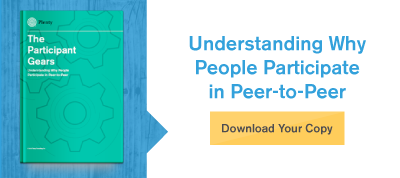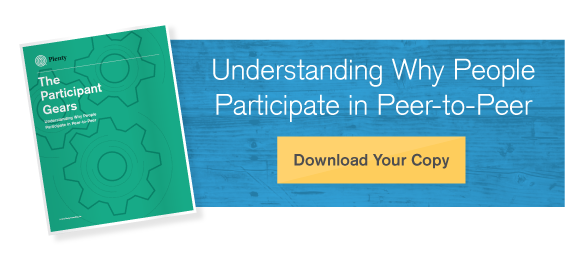When To Take Your Campaigns Offline
The Internet is amazing. Just this morning, I’ve used the Internet to share a cute picture of a dog with my roommate, send a tweet to my followers, and order groceries because I’m feeling a little lazy. Awesome, right?
The Internet has made things faster and more convenient for everyone, including your nonprofit. Just like other sectors, the nonprofit space uses the Internet to grow, to raise money, to communicate, to advertise, and much more. But, like any good thing, you can have too much of the digital world we operate in (something I quickly realized as the delivery fees for my groceries were adding up).
There are many processes the Internet has improved; the ease and speed at which we can purchase, learn, and communicate being some of the most obvious. But what do we loose when we turn to our screens and away from one another?
As in person engagement continues to diminish in our society, audiences are seeking out organizations with a human touch, and appreciate authentic and personal interactions more than ever. Therefore, it is important for nonprofits to maintain a humanistic quality amidst digitally driven communications. In fact, there are several key occasions where it pays to unplug your computer and connect with your supporters offline. Here are some suggestions for when to step away from the Internet and put in some face time with your constituents:
Feedback and Brainstorming SessionsWhether you’re considering making a specific change or you just want general feedback, inviting 5-10 of your top influencers to an in-person feedback and brainstorming session is a great way to engage and hear directly from some of your most important constituents. This opportunity allows you to gather helpful information on what supporters want from your organization. Even better, you’re further interacting with this core group of people by making them feel heard and showing them that they’re important.
There are a few different formats you can use for your sessions, depending on your familiarity with your participants and the goals you have set. For example, a chat over coffee might be perfect for a small, intimate group of constituents that you’ve known for a few years to discuss volunteer recruitment strategies; meanwhile, a lunch meeting might be a more comfortable setting for a slightly larger group that you’re still trying to get to know better. Or, for a session when brainstorming is the focus, try taking the session to a conference room at the office where you can make use of a white board.
Your goals should also help you determine the type of people you invite to the session. For example, for a feedback session regarding a fundraising event, invite your top fundraisers and the team captains of your largest fundraising teams. Another nonprofit might invite the people who are directly benefiting from their program to give their feedback. In another situation, it might be most appropriate to invite your major donors.
Whatever your goals are, make sure to keep them at the forefront when planning your feedback or brainstorming sessions.
Thank You GatheringWe all have that one friend who only calls you when they need something, whether it’s borrowing your new top or asking for a ride to the airport. Sure, you still love them, but that starts to grate on your nerves after awhile, right? Your constituents may often feel the same way – like you only call on them when you need something, especially in the two to three months before an event or campaign.
Luckily, you can easily surprise and delight your constituents and volunteers by inviting them to a gathering when you don’t need something specific from them. Instead, you’re bringing them together to say “thank you, we enjoy spending time with you, and you’re an important part of our organization.”
Your gathering can range from a small event for your key influencers (for example, lunch with 5-10 people), or it could be a large party for 25+ people. With a thank you gathering, you can show (rather than tell) your constituents exactly what they mean to you.
Reunion PartySimilar to a thank you gathering, a reunion party brings together several of your constituents and volunteers in a celebration – except the focus is less about the organization and more about the relationships that your constituents have forged with you and with each other. After all, while your organization’s mission may have been what brought them together, chances are your supporters have bonded outside of your organization too.
Give your constituents a place to further connect, and you’ll see the benefits trickle throughout your organization. These bonds will enhance their experience and strengthen your community. And the stronger someone feels about being a core part of your community, the more likely it is that they’ll return every year.
Phone Calls and Handwritten Letters
Slightly old-fashioned? Sure. Appreciated? Always.
Take five minutes and send a birthday card to a major donor. Write a congratulatory note to your top fundraiser, and send a thank you note to your most dedicated volunteer. Get the card signed by everyone in the office for an extra show of appreciation. Want to go the extra mile? Ask your CEO (or the equivalent) to send a thank you note to your key influencers – not a typed note with a stamped signature, but a short note actually written by them.
Another way to get your senior leadership involved is by asking them to make just a few phone calls each quarter to key constituents, to say thank and catch up. A short phone call goes a long way in making your constituents feel valued and recognized.
Your constituents are real, living, breathing people, and sometimes the best way to treat them as such is to take your fundraising strategies offline. By introducing these strategies into your fundraising campaigns, you can show your constituents how much you appreciate them and get them to recommit to your mission.
Recognition and personal engagement is an important component of participant retention. Learn how you can improve your recruitment and retention operations in our free e-book "The Participant Gears." Download your copy below!
Share this
You May Also Like
These Related Stories

Three Ways To Cultivate Your Peer-to-Peer Community
Need Knows No Season




No Comments Yet
Let us know what you think